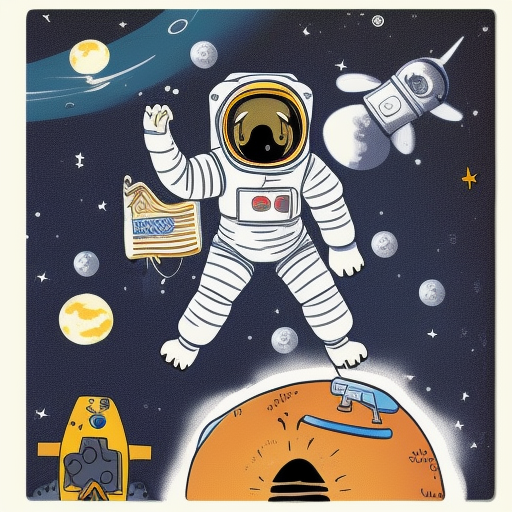Using MongoDB in Rust

Using MongoDB in Rust
In this article, we will explore how to use MongoDB, a popular NoSQL database, in Rust, a systems programming language known for its safety and performance. We’ll cover the basics of setting up a MongoDB connection, creating a collection, and performing basic CRUD operations.
To interact with MongoDB in Rust, we’ll be using the mongodb crate. This crate provides a Rust driver for MongoDB, allowing for seamless integration of MongoDB in Rust applications.
Prerequisites
Before we begin, ensure you have the following installed on your system:
- Rust: Follow the official Rust installation guide to set up Rust on your machine.
- MongoDB: Follow the official MongoDB installation guide to set up MongoDB on your machine.
Setting up a Rust project
Create a new Rust project by running:
$ cargo new --bin mongodb_rust_example
$ cd mongodb_rust_exampleNow, edit the Cargo.toml file to include the necessary dependencies:
[dependencies]
mongodb = "2.0"
tokio = { version = "1", features = ["full"] }
serde = { version = "1.0", features = ["derive"] }mongodb: The Rust MongoDB driver.tokio: The async runtime.serde: A serialization/deserialization library to handle JSON data.
Connecting to MongoDB
To connect to a MongoDB server, we’ll use the mongodb::Client struct. The following function establishes a connection to a local MongoDB server:
use mongodb::{options::ClientOptions, Client};
async fn get_mongo_client() -> Result<Client, mongodb::error::Error> {
let client_options = ClientOptions::parse("mongodb://localhost:27017").await?;
let client = Client::with_options(client_options)?;
Ok(client)
}Creating a Collection
To interact with MongoDB, we need to create a Collection. In this example, we’ll create a users collection.
use mongodb::Collection;
use serde::{Deserialize, Serialize};
#[derive(Serialize, Deserialize, Debug)]
struct User {
name: String,
age: u32,
}
fn get_users_collection(client: &Client) -> Collection<User> {
let database = client.database("rust_mongodb_example");
let users = database.collection::<User>("users");
users
}Here, we define a User struct and implement Serialize and Deserialize using the serde crate. The get_users_collection function takes a reference to a Client and returns a Collection<User>.
CRUD Operations
1. Inserting a Document
To insert a document into a collection, we use the insert_one method. Let’s create a function to insert a user:
use mongodb::error::Result as MongoResult;
async fn insert_user(collection: &Collection<User>, user: User) -> MongoResult<mongodb::results::InsertOneResult> {
collection.insert_one(user, None).await
}2. Finding a Document
To find a document, we use the find_one method. The following function finds a user by their name:
use bson::doc;
async fn find_user_by_name(collection: &Collection<User>, name: &str) -> MongoResult<Option<User>> {
collection.find_one(doc! { "name": name }, None).await
}3. Updating a Document
To update a document, we use the update_one method. The following function updates a user’s age:
async fn update_user_age(collection: &Collection<User>, name: &str, new_age: u32) -> MongoResult<mongodb::results::UpdateResult> {
collection.update_one(doc! { "name": name }, doc! { "$set": { "age": new_age } }, None).await
}4. Deleting a Document
To delete a document, we use the delete_one method. The following function deletes a user by their name:
async fn delete_user_by_name(collection: &Collection<User>, name: &str) -> MongoResult<mongodb::results::DeleteResult> {
collection.delete_one(doc! { "name": name }, None).await
}Example Usage
Now let’s use these functions in the main function:
#[tokio::main]
async fn main() {
let client = get_mongo_client().await.unwrap();
let users = get_users_collection(&client);
let user = User {
name: "Alice".to_string(),
age: 30,
};
// Insert user
insert_user(&users, user).await.unwrap();
// Find user
let found_user = find_user_by_name(&users, "Alice").await.unwrap();
println!("Found user: {:?}", found_user);
// Update user age
update_user_age(&users, "Alice", 35).await.unwrap();
// Find updated user
let updated_user = find_user_by_name(&users, "Alice").await.unwrap();
println!("Updated user: {:?}", updated_user);
// Delete user
delete_user_by_name(&users, "Alice").await.unwrap();
}To run the example, execute cargo run in your terminal.
Conclusion
In this article, we demonstrated how to use MongoDB in Rust. We covered connecting to a MongoDB server, creating a collection, and performing basic CRUD operations. The mongodb crate provides a powerful and easy-to-use API for working with MongoDB in Rust, making it a great choice for developing high-performance applications.
Remember that the mongodb crate is built on top of the async ecosystem in Rust, so using it effectively will require understanding asynchronous programming with Rust. While this article provided a basic introduction, there is much more to learn about MongoDB and Rust. Make sure to consult the official MongoDB Rust driver documentation for more advanced topics and best practices.